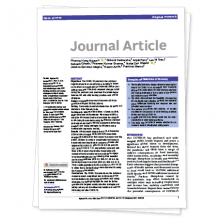Journal article
Jan 26 2024

First foods in a packaged world: Results from the COMMIT consortium to protect young child diets in Southeast Asia (Blankenship JL, White JM, et al. Maternal & Child Nutrition. 2023)
Forty-four percent of all foods and 72% of snacks commercially marketed for young children in Southeast Asia contained added sugars, a study by the Consortium for Improving Complementary Foods in Southeast Asia (COMMIT) initiative found.
Journal article
Jan 26 2024

Overpromoted and underregulated: National binding legal measures related to commercially produced complementary foods in seven Southeast Asian countries are not fully aligned with available guidance (Blankenship J, et al. Maternal & Child Nutrition. 2023)
The market for commercially produced complementary foods (CPCF) is rapidly expanding in Southeast Asia. This study, co-authored by Alive & Thrive, suggests improved, comprehensive, and enforceable national binding legal measures for CPCF to ensure that countries protect, promote, and support optimal nutrition for older infants and young children.
Journal article
Jan 08 2024

Bridging the evidence-to-action gap: enhancing alignment of national nutrition strategies in Cambodia, Laos, and Vietnam with global and regional recommendations (Nguyen TT, Huynh NL, et al. Frontiers in Nutrition. 2024)
This journal article details Alive & Thrive’s examination of the alignment of recent National Nutrition Strategies and Action Plans (NNS) in Cambodia, Laos, and Vietnam with recent global and regional recommendations and standards with a focus on maternal, infant, and young child nutrition an
Journal article
May 08 2013

Maternal and Child Dietary Diversity Are Associated in Bangladesh, Vietnam, and Ethiopia (Journal of Nutrition, 2013)
Emerging evidence suggests that maternal and child dietary diversity are associated. Data on mother-child (6 to 24 months) dyads in Bangladesh, Viet Nam, and Ethiopia were used to examine agreement and association between maternal and child dietary diversity and identify determinants of maternal and child dietary diversity.

